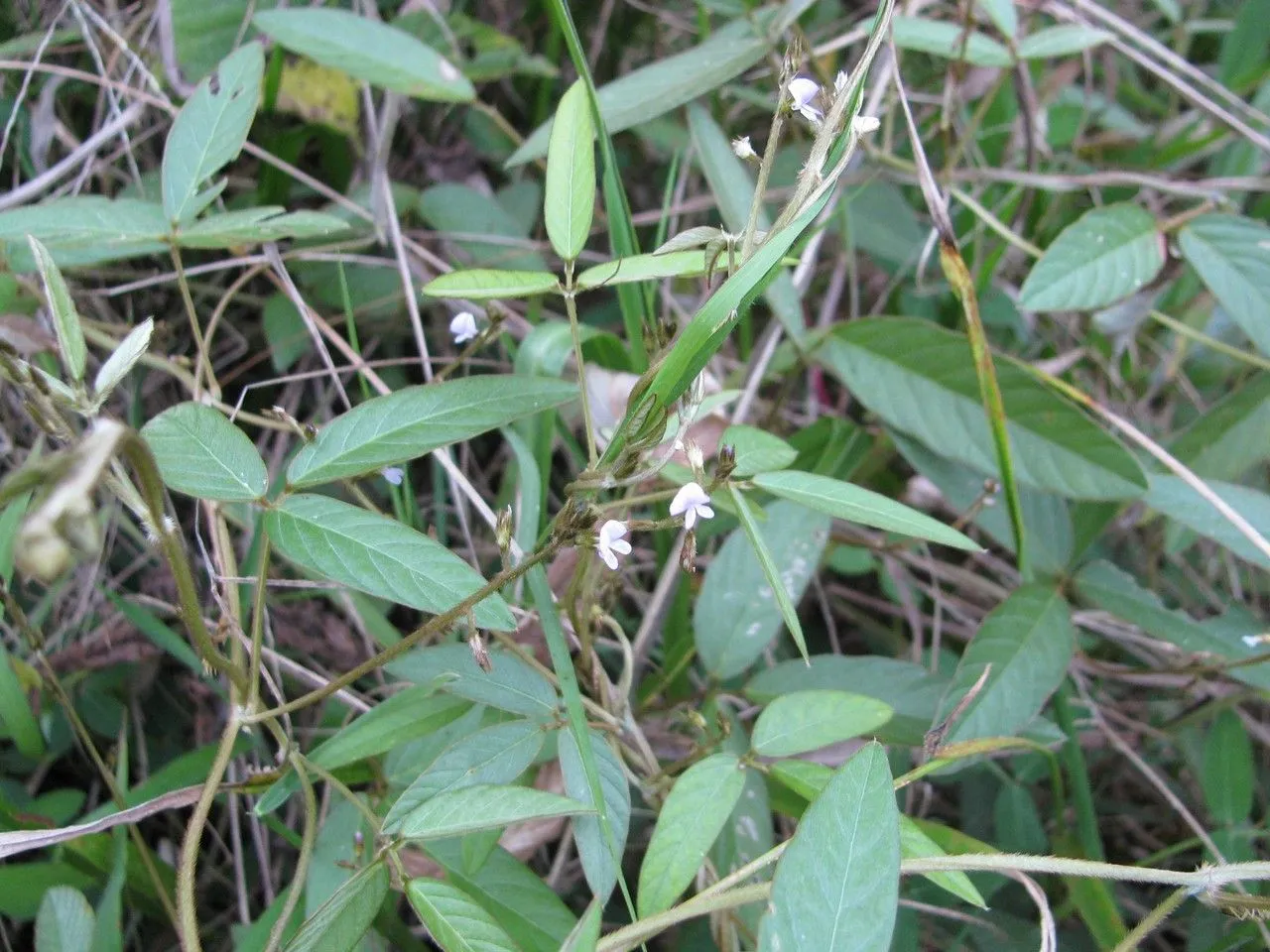
Author: (L.) Sw.
Bibliography: Prodr. Veg. Ind. Occ.: 105 (1788)
Year: 1788
Status: accepted
Rank: species
Genus: Teramnus
Vegetable: False
Observations: Mexico to Trop. America, Trop. Africa, Comoros, Madagascar
Cresta de Gallo Blanco (Teramnus uncinatus)
Cresta de gallo blanco, scientifically known as Teramnus uncinatus, is a fascinating plant species belonging to the Fabaceae family. This perennial herb is notable not only for its botanical interest but also for its widespread presence across various tropical regions. Described authoritatively in 1788 in “Prodromus Vegetationis Indicae Occidentalis” by (L.) Sw., Teramnus uncinatus has garnered attention for its distinctive characteristics and geographical versatility.
Teramnus uncinatus is distinguished by its herbaceous growth habit. The plant typically forms sprawling or climbing vegetation, utilizing tendrils or hooks for support on nearby structures or other plants. Its foliage is composed of trifoliate leaves, each leaflet often presenting a vibrant green hue. The plant blooms with small, delicate flowers that can range in color from white to pale shades, contributing to its common name, Cresta de gallo blanco.
A testament to its adaptability, Teramnus uncinatus is found in a wide range of tropical environments. Its native range spans from Mexico down through Tropical America, showcasing its resilience in varying climates and terrains. Beyond the Americas, the plant has also established itself in Tropical Africa, the Comoros archipelago, and the biologically rich island of Madagascar. Such diverse habitats reflect the plant’s versatility and ecological plasticity.
In many of the regions it inhabits, Teramnus uncinatus plays a vital ecological role. As a member of the Fabaceae family, it is likely involved in nitrogen-fixing, which is crucial for soil health and fertility. This process helps in maintaining healthy ecosystems and supporting agricultural practices in tropical regions.
Culturally, Cresta de gallo blanco may hold significance in local herbal medicine or as part of traditional agricultural systems, although specific uses can vary widely based on regional practices and knowledge.
Teramnus uncinatus, or Cresta de gallo blanco, is a remarkable plant that exemplifies the biodiversity of tropical flora. Its wide distribution from Mexico to Madagascar highlights not only its adaptability but also its importance in various ecological and potentially cultural contexts. The historical botanical description by (L.) Sw. laid the foundation for understanding this versatile species, which continues to intrigue botanists and ecologists alike.
Por: amendoim-de-veado, favinha-de-capoeira, jequirana
Eng: cresta de gallo blanco
En: Cresta de gallo blanco
Pt: Amendoim-de-veado, Favinha-de-capoeira, Jequirana
Taken Dec 16, 2018 by Nelson Zamora Villalobos (cc-by-nc)
Taken Dec 16, 2018 by Nelson Zamora Villalobos (cc-by-nc)
Taken Dec 16, 2018 by Nelson Zamora Villalobos (cc-by-nc)
Taken Nov 26, 2020 by Gomez Candelario (cc-by-sa)
Taken Oct 14, 2010 by OTS – Oviedo-Brenes, Federico (cc-by-nc-sa)
Taken Dec 16, 2018 by Nelson Zamora Villalobos (cc-by-nc)
Taken Dec 16, 2018 by Nelson Zamora Villalobos (cc-by-nc)
Taken Oct 14, 2010 by OTS – Oviedo-Brenes, Federico (cc-by-nc-sa)
Taken Dec 16, 2018 by Nelson Zamora Villalobos (cc-by-nc)
Taken Dec 16, 2018 by Nelson Zamora Villalobos (cc-by-nc)
Taken Dec 16, 2018 by Nelson Zamora Villalobos (cc-by-nc)
Taken Dec 16, 2018 by Nelson Zamora Villalobos (cc-by-nc)
Taken Oct 14, 2010 by OTS – Oviedo-Brenes, Federico (cc-by-nc-sa)
Taken Oct 14, 2010 by OTS – Oviedo-Brenes, Federico (cc-by-nc-sa)
Taken Jan 12, 2015 by OTS – Oviedo-Brenes, Federico (cc-by-nc-sa)
Taken Jan 12, 2015 by OTS – Oviedo-Brenes, Federico (cc-by-nc-sa)
Taken Aug 7, 2015 by OTS – Oviedo-Brenes, Federico (cc-by-nc-sa)
Taken Aug 7, 2015 by OTS – Oviedo-Brenes, Federico (cc-by-nc-sa)
Taken Oct 14, 2010 by OTS – Oviedo-Brenes, Federico (cc-by-nc-sa)
© copyright of the Board of Trustees of the Royal Botanic Gardens, Kew.
© copyright of the Board of Trustees of the Royal Botanic Gardens, Kew.
© copyright of the Board of Trustees of the Royal Botanic Gardens, Kew.
Growth habit>: Vine, Forb/herb
Family: Myrtaceae Author: (F.Muell.) K.D.Hill & L.A.S.Johnson Bibliography: Telopea 6: 402 (1995) Year: 1995 Status:…
Family: Rubiaceae Author: Pierre ex A.Froehner Bibliography: Notizbl. Bot. Gart. Berlin-Dahlem 1: 237 (1897) Year:…
Family: Sapindaceae Author: Koidz. Bibliography: J. Coll. Sci. Imp. Univ. Tokyo 32(1): 38 (1911) Year:…
Family: Asteraceae Author: A.Gray Bibliography: Pacif. Railr. Rep.: 107 (1857) Year: 1857 Status: accepted Rank:…
Family: Fabaceae Author: Medik. Bibliography: Vorles. Churpfälz. Phys.-Ökon. Ges. 2: 398 (1787) Year: 1787 Status:…
Family: Aspleniaceae Author: (Cav.) Alston Bibliography: Bull. Misc. Inform. Kew 1932: 309 (1932) Year: 1932…